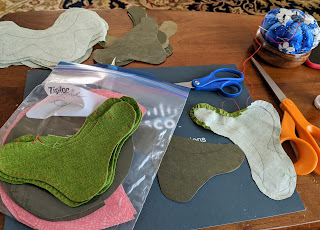It is possible to read the history of this country as one long struggle to extend the liberties established in our Constitution to everyone in America.
~Molly Ivins
The US turns to healing our bodies and souls with the inauguration of President Joe Biden and Vice-President Kamala Harris tomorrow. I will be but early to watch. Let's commit to more than watching though. Let's become involved, especially in local matters and primaries, so horrors like these last few years don't happen again.
Both the 2016 and 2020 elections showed that the majority of Americans did not support the policies of the group that came to power in 2016. By neglecting to participate early, by waiting to see who and what "the parties" promoted, we lost the opportunity to shape those policies. A small group of dedicated, single-issue radicals swung our national agenda shamefully and cost us hundreds of thousands of lives.
Adults know we have to do things we don't want. Sometimes it's working every day, putting on a smile when we would rather go back to bed. Creating equitable political structures is another duty of adulthood - if for no other reason than to keep sadistic, misogynistic, and racist opinions out of the laws of our land.
Quilting
I cut out all the leaves starting with the smallest fabric remnants to maximize diversity. They were then sorted into four piles like dealing cards so each border has basically the same ratio of each fabric. Here is my set for the second side. Oh, my fingers hurt from all this sewing. Even with a thimble.
 |
| Basted leaves for a quilt border |
Of course, the first two sides are shorter than the last two so I started sewing them first. Then the leftover leaves were set aside for the longer sides. It's not a perfect system but maintains some semblance of diversity.
Again the leaves are blanket-stitched so their stems nestle under the vine. I shortened both the stitch length and the zigzag. My Bernina also has a mirror image function that lets me align the "teeth" of the blanket stitch to either side. That makes sewing easier, too.
 |
| Blanket stitch by machine |
Once the leaves are sewn, I re-pin the vines and sew them down. Then it's time to add the flower bases. This template has had the most changes. At first I planned a double-lobed leaf on each side, kind of like a dumbbell. It was too difficult to machine quilt and I ended by including the base with the leaves. Actually it now just looks like a larger base. Whatever. It works.
 |
| Basted flower bases for an applique quilt border |
In the plastic bag the bright pink flowers are cut and ready to be basted next. It's taking about three days to get all the parts basted and another day to pin just the leaves. Then sewing, repinning, more basting. Not a lot to show at the end of the week but I'm sticking with it. It's time to get this top done. I only hope it looks as good as my sketches.
Lectures
One of the unexpected joys of the pandemic is the upwelling of internet meetings that allow international speakers and audience to interact. And one of the benefits of multiple program chairs is the diversity of vision they provide. Sue Bianchi, one of our program chairs, arranged a unique speaker for our December guild meeting - Harriet Riddell of the UK spoke on Street Stitching Around the World. Artists must be brave to put their work out for public response but Harriet takes it to another level. She takes her electric sewing machine around the world to stitch the scenes in front of her. The audience in the street power her machine by pedaling a bike. Sounds crazy, yes? What a opportunity to interact with people, build connections, and build a portfolio of ever-increasingly skilled work.
Last week I joined the first lecture of The Black Index: Artists in Conversation sponsored by the Getty Institute. The online exhibition curated by Bridget Cooks and this month's lecture included two conversations. Professor Leigh Raiford interviewed Lava Thomas about her pencil sketches of the Montgomery bus boycott mug shots. The history Lava researched for this series reminded me of Patricia Montgomery's swing coats.
After a short break, curator LeRonn Brooks and Whitfield Lovell discussed his drawings of card players. Photos of family and friends playing cards highlighted how the cards are the intersection between the viewer and the subject. Whitfield took time to choose the correct card for each person. In a way, this reminded me of Susan Shie's Tarot Cards althought she did it the other way around, chosing a card and then created images for it. Susan embellishes her work with extensive writing across the surface.
Interestingly both textile artists wrote on their work while the others did not. Another feature that struck me was the use of well-known people as models versus "the man in the street." It recalled artists who were paid for commemorating prominent people versus Impressionists who sold work using unknown models or family. The various reasons give us food for thought.
Replays of this lecture are available at the Getty and more are planned monthly.